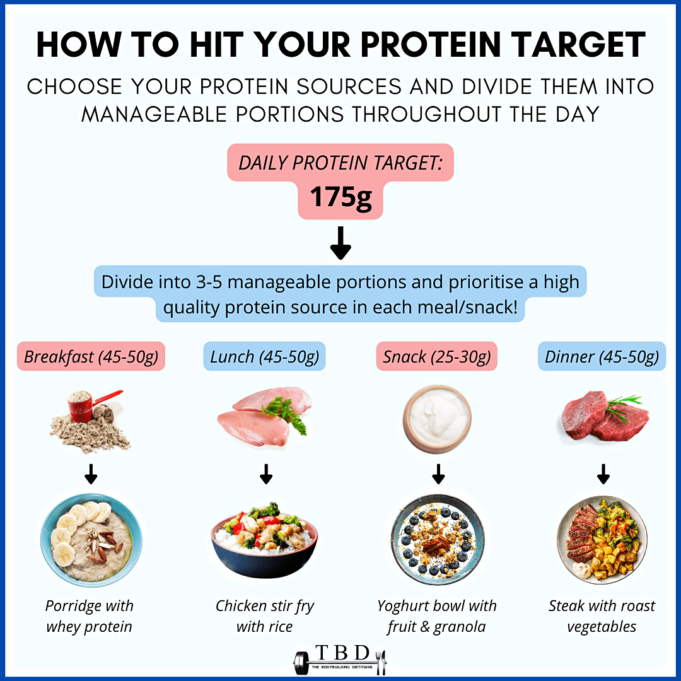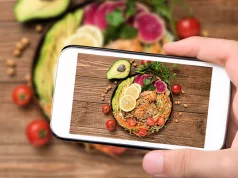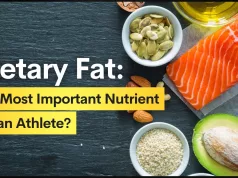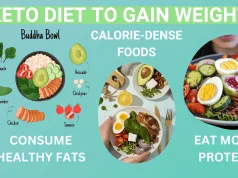How to eliminate sugar from your diet might sound daunting, but it’s a journey worth taking. Sugar, often lurking in hidden forms, can have a significant impact on our health. This guide delves into the world of sugar, revealing its hidden sources and the detrimental effects of excessive consumption. We’ll equip you with the knowledge and strategies to identify sugar in your diet, reduce your intake, and embrace healthier alternatives.
From understanding the different types of sugar and their sources to learning how to read food labels, we’ll guide you through the process of making informed choices. We’ll explore the benefits of a sugar-free lifestyle, including improved weight management, reduced risk of chronic diseases, and increased energy levels. This is not about deprivation but about taking control of your health and making sustainable changes for a brighter future.
Understanding Sugar and its Impact
Sugar is a ubiquitous ingredient in our modern diet, often lurking in unexpected places. Understanding the different types of sugar and their impact on our health is crucial for making informed choices.
Types of Sugar and their Sources
Sugar is a broad term encompassing various forms, each with distinct properties and sources.
- Natural Sugars: Found in fruits, vegetables, and dairy products, these sugars occur naturally and are often accompanied by fiber, vitamins, and minerals. Examples include fructose in fruits, lactose in milk, and sucrose in sugarcane.
- Added Sugars: These sugars are processed and added to foods and beverages during manufacturing. They provide calories but lack nutritional value. Common examples include table sugar (sucrose), high-fructose corn syrup, and honey.
Health Implications of Excessive Sugar Consumption
Excessive sugar intake can lead to a range of health issues, impacting both physical and mental well-being.
- Weight Gain: Sugar is a calorie-dense nutrient, and consuming excess amounts can contribute to weight gain, increasing the risk of obesity.
- Chronic Diseases: Sugar overload can lead to insulin resistance, a precursor to type 2 diabetes. It also increases the risk of heart disease, fatty liver disease, and certain types of cancer.
- Dental Problems: Sugar feeds bacteria in the mouth, producing acids that erode tooth enamel, leading to cavities and other dental issues.
- Mood Swings and Energy Crashes: The rapid spike in blood sugar followed by a sudden drop can cause mood swings, fatigue, and decreased cognitive function.
Hidden Sugars in Everyday Foods
Sugar is often hidden in seemingly healthy foods, making it challenging to track our intake.
- Processed Foods: Many packaged foods, including bread, cereals, yogurt, and sauces, contain significant amounts of added sugar.
- Beverages: Sugary drinks like soda, fruit juices, and energy drinks are major contributors to excess sugar consumption.
- Condiments: Ketchup, barbecue sauce, and salad dressings often contain hidden sugars.
Sugar’s Role in Weight Gain and Chronic Diseases
Excessive sugar intake is a significant factor in weight gain and the development of chronic diseases.
The World Health Organization (WHO) recommends limiting added sugar intake to less than 10% of daily calories.
- Insulin Resistance: Sugar overload can lead to insulin resistance, a condition where the body becomes less responsive to insulin, making it harder to regulate blood sugar levels.
- Inflammation: High sugar intake can trigger chronic inflammation, contributing to the development of heart disease, diabetes, and cancer.
- Increased Triglycerides: Excess sugar can lead to increased levels of triglycerides, a type of fat found in the blood, further increasing the risk of heart disease.
Identifying Sugar in Your Diet
Understanding how much sugar you consume is crucial for making informed choices about your diet. Reading food labels and recognizing common sources of hidden sugars can help you reduce your sugar intake.
Reading Food Labels
Food labels provide valuable information about the nutritional content of packaged foods. Learning to interpret them can empower you to make healthier choices. Here’s a guide to reading food labels:
- Serving Size: Pay attention to the serving size listed on the label, as it serves as a reference point for the other nutritional information.
- Total Sugars: Look for the “Total Sugars” line on the label, which indicates the total amount of sugar in a serving. This includes both added sugars and naturally occurring sugars.
- Added Sugars: The “Added Sugars” line indicates the amount of sugar that was added during processing. This is the sugar you should try to minimize.
- Percent Daily Value (%DV): The %DV indicates how much of a nutrient a serving of food contributes to a 2,000-calorie diet. A %DV of 5% or less is considered low, while a %DV of 20% or more is considered high.
Common Foods with High Sugar Content
Many processed foods contain surprisingly high amounts of sugar. Being aware of these sources can help you make healthier choices. Here are some examples:
- Sugary Drinks: Sodas, fruit juices, energy drinks, and sweetened teas are notorious for their high sugar content.
- Processed Foods: Many packaged foods, such as breakfast cereals, cookies, crackers, and candy, contain significant amounts of added sugars.
- Sweetened Yogurt: While yogurt can be a healthy choice, flavored and sweetened varieties often contain added sugars. Opt for plain yogurt and add your own natural sweeteners like fruit or honey.
- Sauces and Dressings: Many sauces and dressings, including ketchup, barbecue sauce, and salad dressings, contain hidden sugars.
Sugar Substitutes
Several sugar substitutes are available, offering alternatives for those seeking to reduce their sugar intake. However, it’s important to consider their potential benefits and drawbacks:
- Artificial Sweeteners: These sweeteners, such as aspartame, sucralose, and saccharin, are calorie-free and provide sweetness without adding sugar. However, some people experience side effects like headaches or digestive issues.
- Natural Sweeteners: These sweeteners, such as stevia and monk fruit, are derived from plants and are generally considered healthier than artificial sweeteners. However, they may have a slightly different taste profile.
- Sugar Alcohols: These sweeteners, such as erythritol and xylitol, are naturally occurring sugars that are partially digested by the body. They have fewer calories than sugar but can cause digestive discomfort in some people.
Sugar Content in Common Foods
Here is a table listing the sugar content of some common foods:
| Food | Sugar Content (grams per serving) |
|---|---|
| Soda (12 oz) | 39 |
| Fruit Juice (8 oz) | 26 |
| Breakfast Cereal (1 cup) | 15 |
| Yogurt (6 oz) | 18 |
| Chocolate Bar (1.5 oz) | 20 |
Strategies for Reducing Sugar Intake: How To Eliminate Sugar From Your Diet
Reducing sugar intake can seem daunting, but it doesn’t have to be an all-or-nothing approach. By making gradual changes and adopting mindful eating habits, you can significantly decrease your sugar consumption without feeling deprived.
Gradual Reduction, How to eliminate sugar from your diet
Starting with small steps and gradually reducing sugar intake can make the process more manageable. Instead of eliminating all sugar at once, focus on making incremental changes. For instance, if you typically have two sugary drinks per day, try reducing it to one. As you become accustomed to this change, you can further reduce your intake.
Mindful Eating and Sugar Cravings
Mindful eating plays a crucial role in managing sugar cravings. By paying attention to your body’s signals and understanding your triggers, you can better control your sugar intake. When you feel a craving coming on, ask yourself:
- Am I truly hungry, or am I simply bored or stressed?
- What are the underlying emotions driving this craving?
- What healthy alternatives can satisfy my need?
Identifying your triggers and developing coping mechanisms for managing cravings can empower you to make healthier choices.
Step-by-Step Plan for Eliminating Sugar
A structured approach can be helpful in eliminating sugar from your diet. Here’s a step-by-step plan to guide you:
- Identify Your Sugar Sources: Keep a food journal for a week to track your sugar intake. This will help you identify hidden sugars in processed foods, beverages, and even seemingly healthy options.
- Replace Sugary Drinks: Swap sugary sodas, juices, and energy drinks with water, unsweetened tea, or sparkling water with a squeeze of lemon or lime.
- Read Food Labels Carefully: Pay attention to added sugars, including high-fructose corn syrup, sucrose, glucose, and dextrose. Choose products with lower sugar content or opt for sugar-free alternatives.
- Gradually Reduce Sweeteners: Start by reducing your sugar intake by 25% and gradually decrease it further over time. This gradual approach allows your taste buds to adjust and helps prevent cravings.
- Focus on Whole Foods: Prioritize whole, unprocessed foods like fruits, vegetables, lean protein, and whole grains. These foods are naturally low in sugar and provide essential nutrients.
- Experiment with Sugar-Free Alternatives: Explore natural sweeteners like stevia or monk fruit to satisfy your sweet tooth without the added sugar.
- Seek Support: Share your goals with friends and family and enlist their support. Joining a support group or working with a registered dietitian can also be beneficial.
Alternative Sweeteners and Healthy Options
When you’re cutting back on sugar, you’ll need to find alternatives to satisfy your sweet tooth. Understanding the different types of sweeteners available can help you make informed choices.
Natural Sweeteners
Natural sweeteners are derived from plants and often contain vitamins, minerals, and antioxidants.
- Stevia: A natural, plant-based sweetener with zero calories and no impact on blood sugar levels. It’s extracted from the stevia plant and is about 200 times sweeter than sugar.
- Honey: A natural sweetener produced by bees from the nectar of flowers. It contains small amounts of vitamins, minerals, and antioxidants. However, it’s still high in calories and should be consumed in moderation.
- Maple Syrup: A natural sweetener made from the sap of maple trees. It’s a good source of manganese and contains some antioxidants. However, it’s also high in calories and should be used sparingly.
- Agave: A natural sweetener derived from the agave plant. It’s a good source of fructans, a type of fiber that may support gut health. However, it’s also high in fructose, which can be detrimental to health in excess.
- Dates: A naturally sweet fruit that can be used as a sweetener in smoothies, desserts, and baked goods. Dates are a good source of fiber, potassium, and antioxidants.
Artificial Sweeteners
Artificial sweeteners are synthetically produced and typically have zero or very low calories.
- Aspartame: An artificial sweetener that’s about 180 times sweeter than sugar. It’s often used in diet sodas and other low-calorie foods.
- Sucralose: An artificial sweetener that’s about 600 times sweeter than sugar. It’s often used in baked goods, desserts, and beverages.
- Saccharin: An artificial sweetener that’s about 300 times sweeter than sugar. It’s often used in diet sodas and other low-calorie foods.
Healthy Alternatives for Sweetening
There are many healthy and delicious ways to sweeten your food and beverages without relying on sugar.
- Fruits: Fresh, frozen, or dried fruits can add sweetness and flavor to smoothies, yogurt, oatmeal, and desserts. Some good choices include berries, bananas, apples, and pears.
- Spices: Spices like cinnamon, nutmeg, and ginger can add warmth and sweetness to desserts and beverages.
- Unsweetened Cocoa Powder: This is a great alternative to chocolate that can add a rich, chocolatey flavor to desserts and beverages.
Sugar-Free or Low-Sugar Dessert Recipes
Here are a few recipes for sugar-free or low-sugar versions of popular desserts:
Sugar-Free Chocolate Mousse
Ingredients:
* 1 cup unsweetened cocoa powder
* 1/2 cup unsweetened almond milk
* 1/4 cup stevia
* 1/4 cup water
* 1/4 teaspoon vanilla extract
Instructions:
1. In a saucepan, whisk together the cocoa powder, almond milk, stevia, and water.
2. Cook over medium heat, stirring constantly, until the mixture is smooth and thickened.
3. Remove from heat and stir in the vanilla extract.
4. Pour the mixture into individual serving dishes and chill for at least 2 hours before serving.
Low-Sugar Strawberry Shortcake
Ingredients:
* 1 cup sliced strawberries
* 1/4 cup unsweetened almond milk
* 1/4 teaspoon vanilla extract
* 1/4 cup stevia
* 1 cup low-sugar biscuits
* 1/4 cup unsweetened whipped cream
Instructions:
1. In a bowl, combine the strawberries, almond milk, vanilla extract, and stevia.
2. Let the mixture sit for 15 minutes to allow the flavors to meld.
3. Split the biscuits in half and top with the strawberry mixture and whipped cream.
Incorporating Fruits and Natural Sweeteners
Fruits and natural sweeteners can be incorporated into your diet in many ways.
- Add fruit to smoothies: Berries, bananas, and mangoes are great additions to smoothies. You can also add a spoonful of honey or maple syrup for extra sweetness.
- Use dates in baked goods: Dates can be used as a natural sweetener in cookies, muffins, and bread.
- Make a fruit salad: Combine your favorite fruits and drizzle with a little honey or maple syrup for a healthy and satisfying dessert.
Maintaining a Sugar-Free Lifestyle
Embarking on a sugar-free journey is a commendable step towards a healthier you. While the initial transition may seem challenging, with perseverance and the right strategies, you can successfully navigate this path and reap the long-term benefits of a sugar-free lifestyle.
Overcoming Challenges and Staying Motivated
The initial days of eliminating sugar can be a rollercoaster of emotions, marked by cravings and the temptation to revert back to your old habits. However, understanding the underlying reasons for these challenges can help you stay motivated and on track.
- Sugar Cravings: Sugar is a highly addictive substance, and your body may experience withdrawal symptoms as it adjusts to the lack of its usual sugar rush. These cravings are often temporary and will subside over time as your body re-learns to regulate its blood sugar levels.
- Social Events: Navigating social gatherings can be tricky when everyone else is indulging in sugary treats. Prepare yourself by having healthy snacks on hand, politely decline sugary offerings, and focus on enjoying the company rather than the food.
- Emotional Eating: Many people turn to sugar for comfort or to cope with stress. Identify your emotional triggers and find healthier ways to manage stress, such as exercise, meditation, or spending time with loved ones.
Strategies for Long-Term Success
Maintaining a sugar-free lifestyle is not a temporary fix but a long-term commitment to your health. Here are some strategies to ensure your success:
- Gradual Reduction: Instead of going cold turkey, gradually reduce your sugar intake over time. This approach allows your body to adjust gradually and reduces the risk of intense cravings.
- Read Food Labels: Pay close attention to food labels and avoid products with added sugar, high fructose corn syrup, and other hidden sugars. Opt for whole, unprocessed foods.
- Find Healthy Substitutes: Explore natural sweeteners like stevia, erythritol, and monk fruit, which are low in calories and do not spike blood sugar levels. Experiment with spices and herbs to add flavor to your dishes.
- Plan Ahead: Prepare healthy meals and snacks in advance to avoid impulsive choices when hunger strikes. Pack healthy snacks for work, school, or outings.
- Seek Support: Connect with others who have successfully eliminated sugar from their diet. Share your experiences, provide support, and learn from each other’s successes and challenges.
Successful Stories
There are countless individuals who have successfully embraced a sugar-free lifestyle and experienced remarkable improvements in their health and well-being.
“After eliminating sugar from my diet, I experienced a significant reduction in my cravings for unhealthy foods. I have more energy, my skin is clearer, and I feel much better overall.” – Sarah, a successful sugar-free advocate.
“I used to suffer from chronic fatigue and brain fog. Since going sugar-free, my energy levels have skyrocketed, and I feel mentally sharper than ever.” – John, a sugar-free enthusiast.
These stories are a testament to the transformative power of a sugar-free lifestyle. While the journey may have its challenges, the rewards are well worth the effort.
Summary

Eliminating sugar from your diet is a journey of empowerment, a journey towards a healthier, more vibrant you. By understanding the impact of sugar, identifying its hidden sources, and implementing practical strategies, you can take control of your health and reap the numerous benefits of a sugar-free lifestyle. Remember, it’s not about perfection, but about progress. Embrace the process, celebrate your victories, and enjoy the journey towards a healthier, happier you.
Popular Questions
What are some healthy alternatives to sugar?
Natural sweeteners like stevia, honey, and maple syrup can be used in moderation. Fruits like berries and bananas can also add natural sweetness to your diet.
How long does it take to see results from eliminating sugar?
You may notice improvements in energy levels, sleep quality, and skin clarity within a few weeks. However, it’s important to focus on long-term health benefits and not solely on short-term results.
Is it okay to have occasional cheat days when eliminating sugar?
While occasional indulgences are fine, try to keep them in moderation and focus on making healthy choices most of the time. Listen to your body and be mindful of your cravings.
Eliminating sugar from your diet can be a challenge, but it’s a worthwhile step towards a healthier lifestyle. It’s crucial to understand that losing weight isn’t just about exercise; it’s also about making smart dietary choices. You might wonder if running is the best way to lose weight, and while it’s an excellent form of exercise, it’s important to consider the overall picture.
Is running the best way to lose weight ? Once you’ve addressed the sugar issue, you can then delve into the best exercise strategies for your body type and goals. Remember, a balanced approach to both diet and exercise is key to achieving sustainable weight loss.
Eliminating sugar from your diet can be a challenge, but it’s important for overall health. One way to make the transition easier is to focus on increasing your fiber intake. This can help you feel fuller for longer, making it easier to resist sugary cravings.
To learn more about how much dietary fiber you need each day, check out this helpful article: how much dietary fiber per day. Once you’ve established a good fiber foundation, you can start making gradual changes to your diet, replacing sugary foods with healthier alternatives.
Cutting sugar from your diet can seem daunting, but it’s achievable with a structured approach. A key strategy is adopting a clean diet plan , focusing on whole, unprocessed foods. This means prioritizing fruits, vegetables, lean proteins, and healthy fats, which naturally help curb sugar cravings and promote overall well-being.
By embracing a clean diet, you’ll not only reduce sugar intake but also nourish your body with essential nutrients, leading to a healthier and more energized you.
























